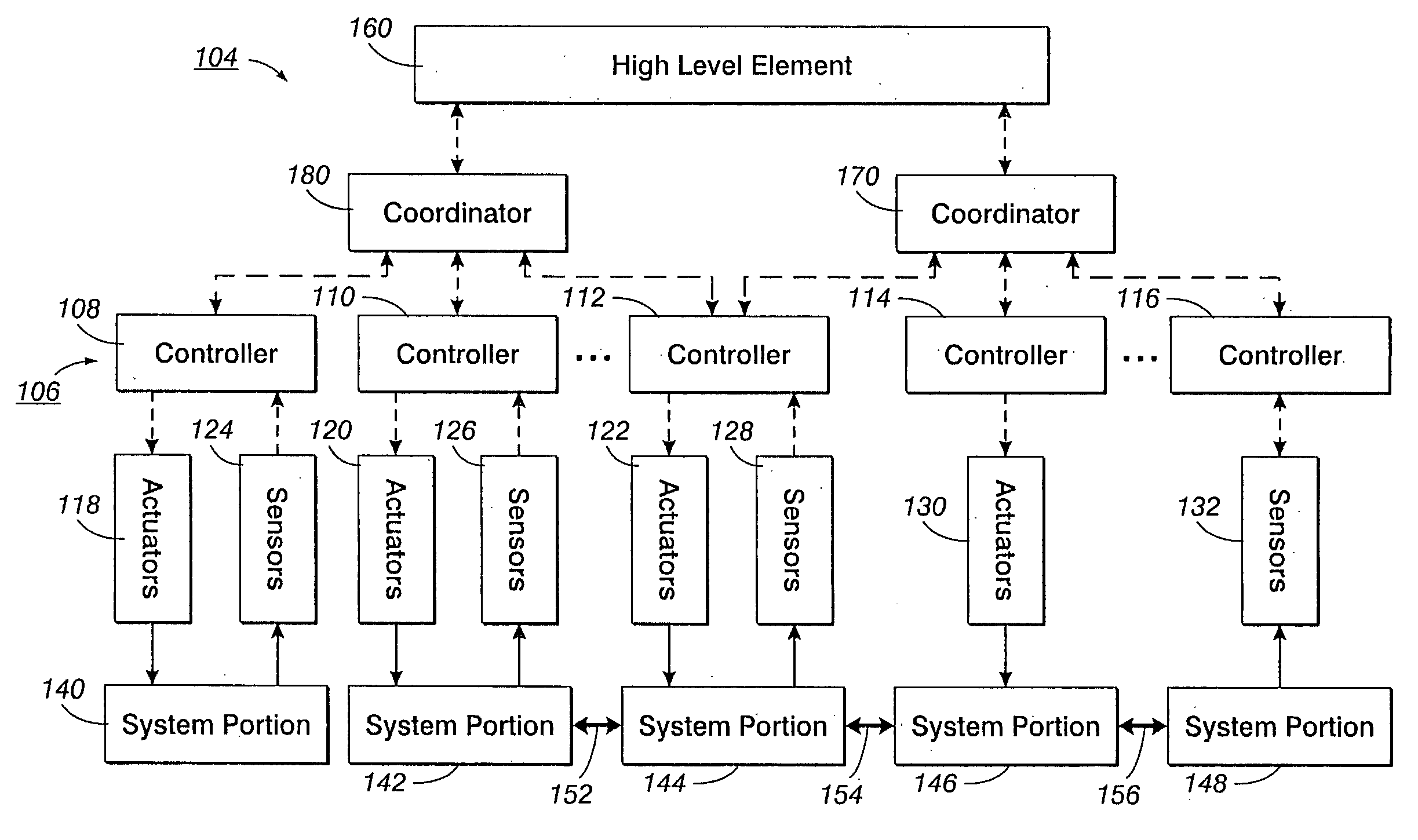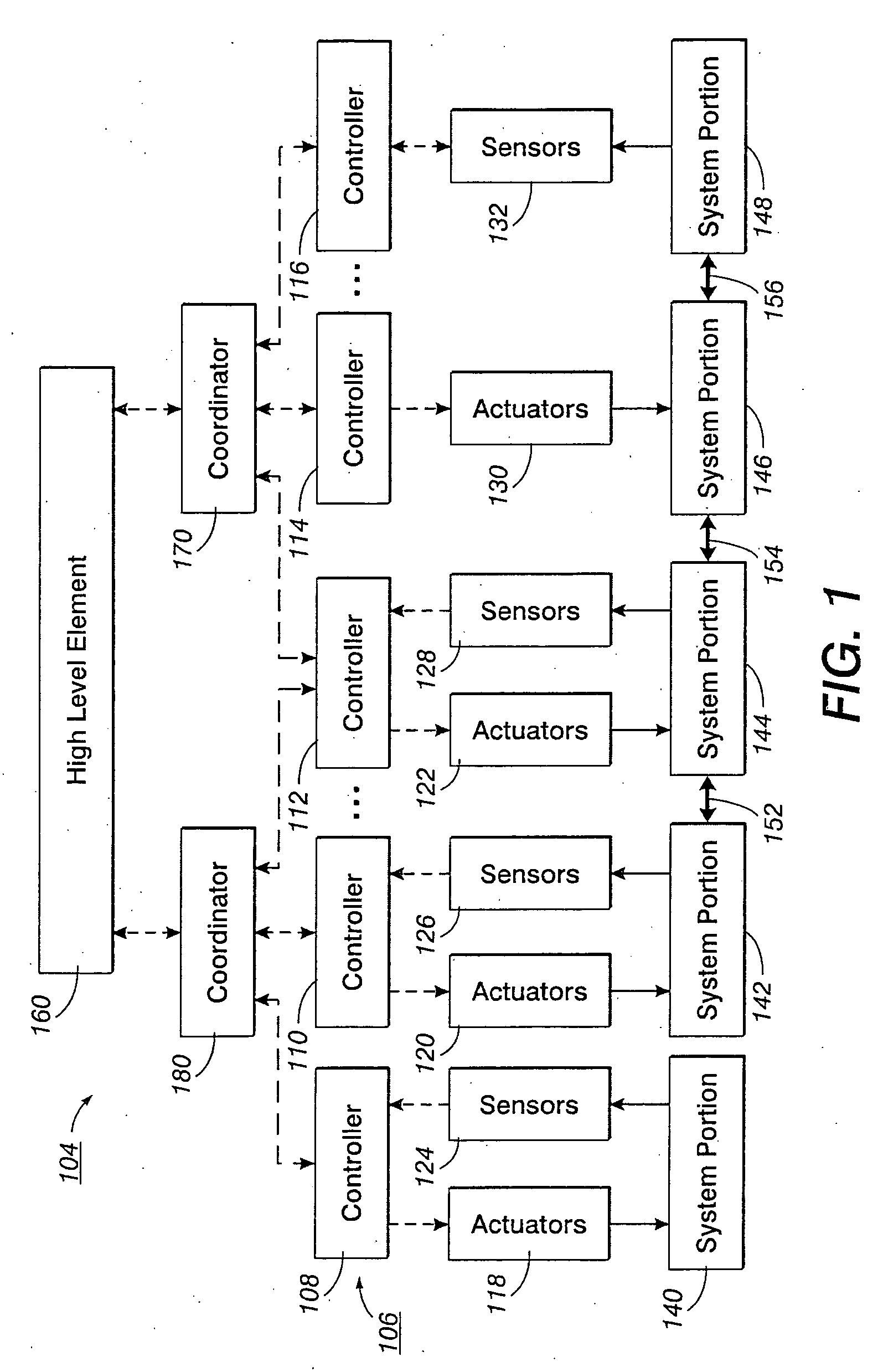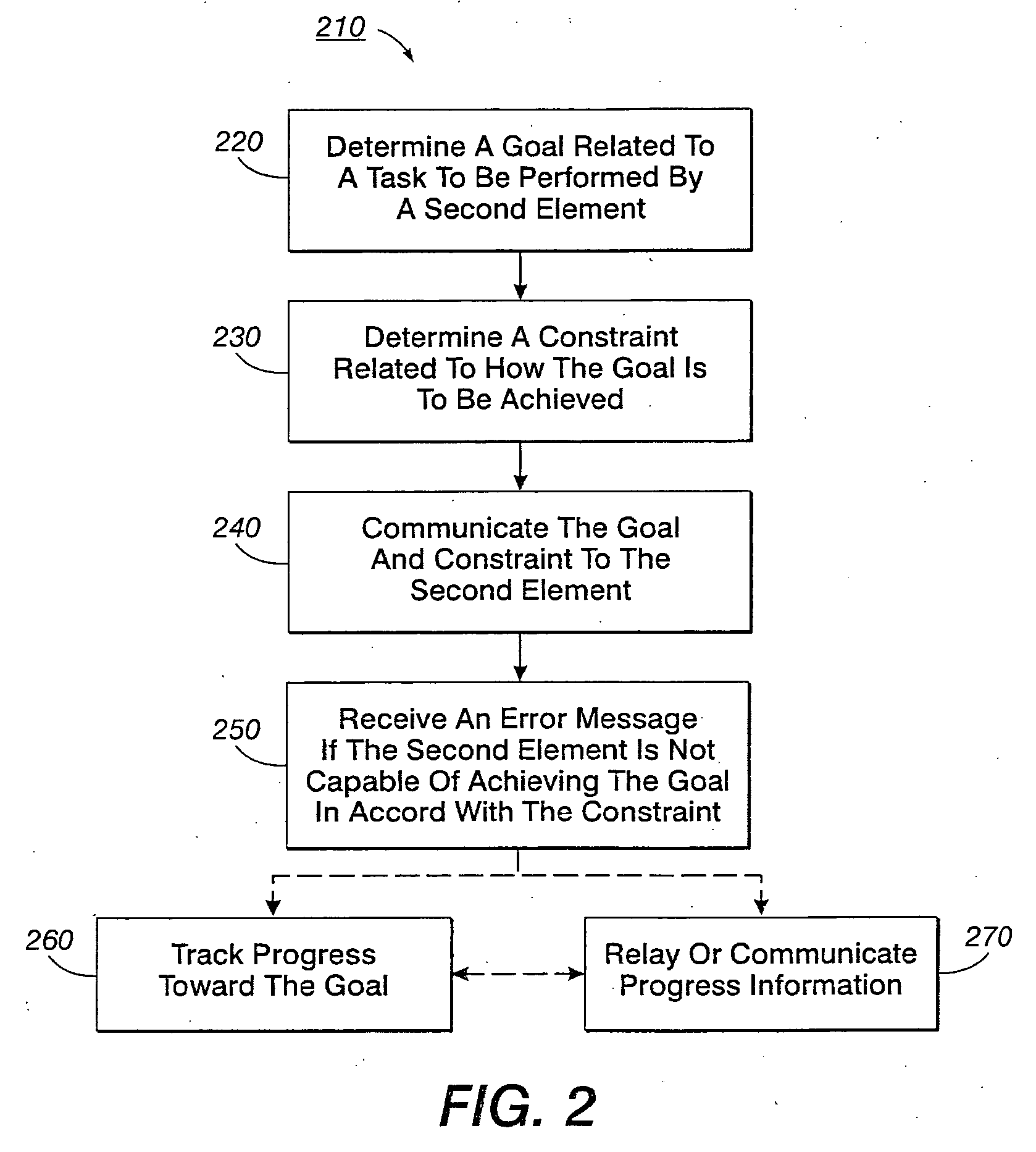Communication in a distributed system
- Summary
- Abstract
- Description
- Claims
- Application Information
AI Technical Summary
Problems solved by technology
Method used
Image
Examples
embodiment 404
[0219] For instance, in the illustrated document processing embodiment 404, subtasks for a first sheet may have included generating 220, 230 goals and constraints for matching a speed of nips 434 of the first module 420 to a speed of a sheet exiting the first marking engine 410 and receiving the first sheet 416 therefrom. A second subtask might have been for nips 434 of the second module 422 to match the speed of the first sheet 416 as it exited the first module 420. A subtask of the third module 424 may have been to match the speed of the first sheet 416 as a leading edge thereof exited the second module 422. Yet another subtask may have been for the nips 434 of the first, second and third modules 420, 422, 424 to accelerate or to begin to accelerate the first sheet 416 to a higher transportation system 414 transport speed.
[0220] Additional subtasks associated with the fourth, fifth and sixth modules 426, 428, 430 may have included matching associated nip 434 speeds to the speed of...
case 1
[0233] Few Controller Coordination Times; Master-Slave Coordination
[0234] In a case where the ratio of time spent on events under the control of an individual module controller to time spent on events under the control of multiple module controllers is large (loosely integrated system), most of the time a module might be operating in the “independent sheet control” mode similar to the “independent” mode described above, where no communication to other modules is required. However, when, for example, a sheet (e.g., 416, 418) is in two or more modules at once, coordination is necessary. One approach is to have master-slave type coordination. When the sheet is about to enter the next module, a controlling module (e.g., 448 / 428) would go into “master sheet control” mode, and would initiate coordination with a downstream module (e.g., 450 / 430). The controlling module (e.g., 448 / 428) would send 240 a command message including cooperative goals and constraints, to the downstream module, g...
case 2
[0253] Many Controller Coordination Events; Coordinating Controller-Based Hypermodular Coordination
[0254] In a tightly coupled system where there are many module controller coordination events (e.g., because of small modules relative to sheet size, when the sheet may always be in multiple modules at once), module-module transfer is the norm rather than the exception. In this case, as illustrated in FIG. 4, an approach is to have a centralized coordinating controller (CC) (e.g., 170, 180, 464, 460) for each task or workpiece (e.g., sheet) that brokers all data sharing among the modules. All modules acting on or about to act on a given sheet communicate with that coordinating controller. The coordinating controller subscribes 340 to sensor data variables for all modules, so that when a module received sensor data, it would send a “sensor data” message, as above, to the coordinating controller. The modules in turn subscribe 340 to sensor data from the coordinating controller, so that ...
PUM
 Login to View More
Login to View More Abstract
Description
Claims
Application Information
 Login to View More
Login to View More - R&D
- Intellectual Property
- Life Sciences
- Materials
- Tech Scout
- Unparalleled Data Quality
- Higher Quality Content
- 60% Fewer Hallucinations
Browse by: Latest US Patents, China's latest patents, Technical Efficacy Thesaurus, Application Domain, Technology Topic, Popular Technical Reports.
© 2025 PatSnap. All rights reserved.Legal|Privacy policy|Modern Slavery Act Transparency Statement|Sitemap|About US| Contact US: help@patsnap.com



